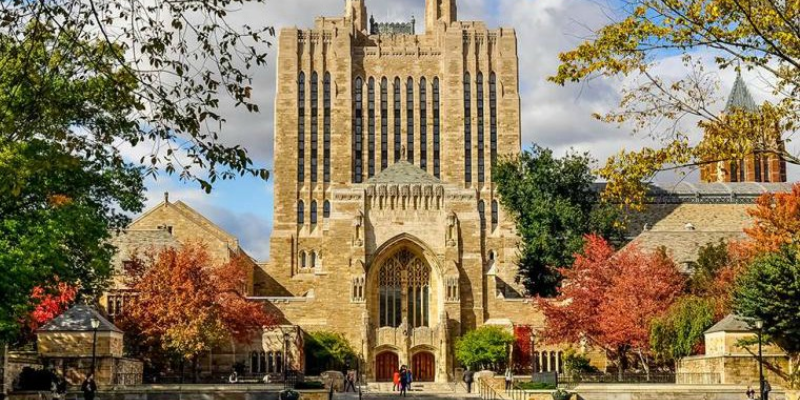This year marks the 1,700th anniversary of the Council of Nicaea in 325 – undoubtedly a date that would serve as a title for some ecclesiastical version of 1066 and All That. For those who had their theological education in another era, this was a crucial moment in a story in which authentic Christian teaching steadily overcame dissident versions of the truth and hostile state persecution to emerge as a unified scheme of belief, binding together Christian communities across (and beyond) the Roman Empire.
But the landscape of early Christian studies has changed almost beyond recognition in the past half century, both in its focus and in its methods. In Ancient Christianities, Paula Fredriksen pays a gracious tribute to the classic textbook by Henry Chadwick, The Early Church (1967), but makes it clear from the beginning that she is approaching the record with very different goals and tools: this will not be primarily an account of the refinement of theological theory; nor will it take for granted that there is one narrative to relate, the history of one “mainstream” community resisting deviations from the deposit of faith. The title tells its own story: the first centuries of what we must now call the Common Era display a rich and confusing variety of “Christianities”, uneasily coexisting variants of language and practice invoking (in different ways) the memory of Jesus of Nazareth and often, but not always, negotiating, refining or contesting the complicated legacy of Paul of Tarsus.
At the root of this spectrum of practice lies an elusive set of events best described as a protracted debate within the Jewish communities of the Eastern Mediterranean. Fredriksen has written elsewhere about some of the factors at work in this, arguing with great originality and persuasiveness that for Paul of Tarsus the life of the earliest Christian groups offered a welcome – literally heaven-sent – opportunity to clarify how someone not ethnically Jewish might be in some way absorbed into the community of God’s people. The gathering-in of all nations at the end of time, as prophesied in Jewish apocalyptic literature of the “Second Temple” period, was now realized in advance, in communities where loyalty to Jesus as anointed deputy of God, a loyalty shared between Jews and non-Jews, might overcome ethnic barriers and the requirements of ritual observance (especially male circumcision).
The opening chapter of this book is an excellent recapitulation of this approach, handling early Christian “antisemitism” with nuance. What we see in the development of Christian rhetoric in the period from – say – 50 CE to 200 CE is a shift from “intra-Jewish” to “anti-Jewish” language. The new identity of the Christian communities, as presented by their intellectual leadership, increasingly rejects any idea of constructive coexistence, let alone sharing in traditional Jewish observance, despite the survival in many settings of such commonality at grassroots level. The language already present in Scripture suggesting collective Jewish guilt for the execution of Jesus is more and more insistently deployed against contemporary Jewish people, and the all too familiar tropes of Jewish malignity – and of the “curse” hanging over the entire nation, exemplified in defeat and exile – are mobilized to justify rigorous separation and eventually, when Christianity had become the legally dominant faith of the Empire, the enforcing of discrimination and the loss of civil liberties.
We are still a long way from early-modern and modern fantasies of purely racial hostility, and Fredriksen – who has also written with insight about Augustine’s attitude to Jews – reminds us of theologians who argued against allowing theological polemic against Judaism to translate into a rationale for murderous violence against actual Jews: their continued, even protected, existence was itself a part of the divine purpose. But that does not alter the pervasiveness of anti-Judaism in pretty well all varieties of Christianity in this period: a legacy to later church life that resists any defence or excuse.
The significance of the “apocalyptic” register is evident in other ways, though. The modern reader will often find the brutal language of early Christian argument, the annihilating hostility to those who took different positions, as repellent as the hysteria of modern online exchanges. The author notes that this take-no-prisoners absolutism is partly the effect of the “agonistic” rhetorical conventions of the era, the forensic training of public speakers whose task was to win their case at all costs. But another contributory factor was precisely the hope for a consummation of history in which all human beings would converge in worship of the same solitary and competitor-less deity – a hope given dramatic expression in Jewish visionary literature, then turned against Jewish identity by Christians. Anxiety about orthodoxy was not only about winning arguments, but also about securing irreversible convergence in belief and worship; and some forms of Judaism, in a grimly ironic twist, provided Christians with tools that could be used against Jews as well as those labelled Christian “deviants”.
For Fredriksen, the legal privileges granted to “catholic”, bishop-governed Christianity in the fourth century turned internal debates about doctrine into life-and-death issues of who was legitimately inside and outside the true Church. “Heresy”, which originally meant no more than an opinion or favoured perspective, came to mean the maliciously motivated refusal of life-giving truth. “Schism”, the separation of one group from another over disputed practices or decisions, took on a more serious character when one party not only claimed exclusive fidelity to divinely authorized truth, but could mobilize the power of the state to enforce its view.
Some of Fredriksen’s discussion of these issues seems to me among the less strong features of her book. She is inclined, I think, to underrate the intensity of pre-fourth-century divisions – some of which already (as she notes) involved denying the validity of baptism administered by the “wrong” authority. When she says that the controversial theology that prompted the Council of Nicaea “was originally only a schismatic position”, she sits far too light to the perceived centrality of the issues disputed and the willingness of the participants to deny communion to each other. It was not simply the advent of an emperor with elusive but unmistakeable Christian sympathies that made this situation serious: it was the existing seriousness of division that made Constantine take the unprecedented step of calling an Empire-wide council to resolve it.
The author also speaks, from time to time, of diverse Christian “denominations” – a terminology that projects onto the period a model of religious diversity alien to the pre-modern world. Paradoxically, this cuts against one of Fredriksen’s basic arguments. We moderns talk about “denominations” because we have a clear working model of “theme and variations”, a loose but serviceable concept of essential Christianity that allows us to enumerate its varieties. That is certainly not how early “catholics” – Valentinians, Donatists, Montanists and so on – understood their situation. And the question of what counted as “a” Christianity in the period remains rather unclear. Did all of the writers of the “gnostic” texts discovered at Nag Hammadi in Egypt think that they were “Christian”? I doubt it. And, though I can see why Manichaeism is presented as “a” Christianity, it is much more helpful to see it as a crucially new kind of movement, a self-conscious attempt to create a synthetic and universal religious discourse uniting, correcting and transcending a range of traditions – in purely structural or formal terms, the precursor of Islam.
Ancient Christianities has manifold virtues – not least its exemplary clarity of exposition and its impressive synthesis of a broad spectrum of recent specialist scholarship – but it takes for granted some scholarly trends that could do with a cautionary note or two. We are several times told that the Acts of the Apostles is a second-century text – a defensible view, widely accepted, especially in the US, but far from unanimously agreed, and creating its own problems. The chapter on martyrdom builds on Candida Moss’s vigorously argued case for playing down the scale of persecution in the Roman Empire, and for reading martyr stories as a powerfully partisan literary exercise. While few scholars would defend the absolute veracity of all the martyrological texts, this misses the obvious fact that you don’t need regular mass pogroms to create and maintain a persecutory climate; as any Christian in Pakistan, or Muslim in Myanmar, or Jew almost anywhere, will confirm, all you need is a steady climate of contempt and loathing that can at any moment be activated both in indiscriminate mob violence and in the targeted killings of prominent figures. Scapegoating occurs at many levels, not all of them consistently visible and violent.
A solid and judicious chapter on asceticism touches a bit on what was promised experientially to the Christian believer, but the general silence on art and liturgy means that we are left with a limited sense of why and how doctrines mattered to early Christians – what they thought was happening to them when they received holy communion (oddly, the Eucharist is barely mentioned in this book) or when they were stripped naked in darkness and immersed in the waters of baptism; what motivated the extraordinary flowering of acute psychological analysis in the early monastic literature, which aimed to guide the reader to growth in self-awareness as a preliminary to contemplative prayer. We also miss some of the sheer intellectual energy of writers of the fourth and fifth centuries, engaging – like Gregory of Nyssa – with the biology or physics of the day, or – like Augustine – creating new philosophical patterns for reflecting on memory, desire and time, on power and collective political mythology, and a good deal more.
Paula Fredriksen’s book is an admirable introduction to a range of essential aspects of the movements invoking Jesus. I should gladly commend it to students beginning the study of the subject. But, without reverting to the simplistic models of earlier generations, or subscribing to uncritical models of orthodoxy and deviancy, I should also want to urge students to let their imagination linger a bit more on how the early Christians built up the “thick” cultural life, connecting liturgy, practice, hagiography and doctrinal exploration, that finally became a Christianity able to think about its own history, to interrogate itself across the centuries about its own coherence and – a loaded word, I realize – fidelity.
Rowan Williams is a poet, theologian and former Master of Magdalene College, Cambridge
The post Gathering in the nations appeared first on TLS.

 By Times Literary Supplement | Created at 2025-03-26 14:07:24 | Updated at 2025-04-03 09:36:44
1 week ago
By Times Literary Supplement | Created at 2025-03-26 14:07:24 | Updated at 2025-04-03 09:36:44
1 week ago






